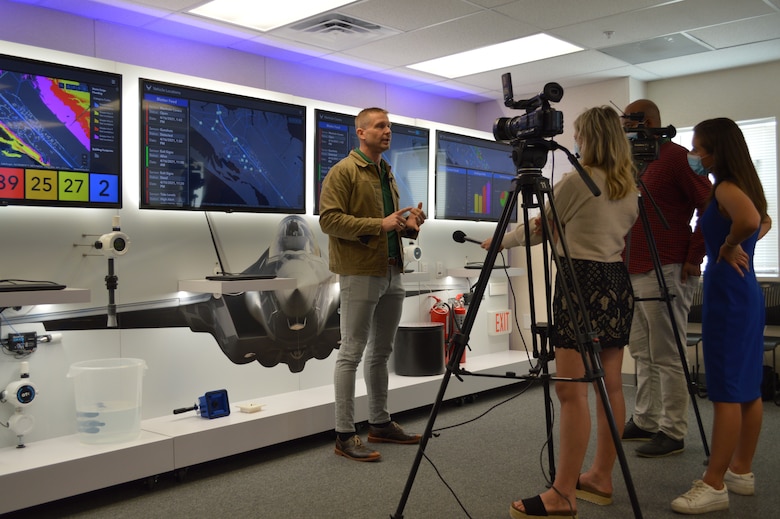The Air Force offered its first glimpse of a new virtual operations prototype during a live equipment demonstration at Tyndall Air Force Base, April 28.
The demonstration display, dubbed the Technology Lab, offered media a peek into the future of one of the innovative technologies that will make Tyndall AFB the Installation of the Future. The Installation Resilience Operations Center, or IROC, prototype is a game-changing solution for enhancing base security, emergency response and facility operations.
"The IROC effort lays the foundation for the Air Force to rapidly adopt new technologies for enhanced situational awareness and improved facility operations," said Lowell Usrey, PMO Integration branch chief with the Air Force Civil Engineer Center's Natural Disaster Recovery program. "It's a transformative model for what agile methodologies and modern hybrid cloud technologies can achieve for the military."
Last fall, the Air Force awarded more than $15 million in contracts for innovative technologies, including the IROC prototype being developed by SimpleSense and Novetta. The system will enhance base security and facility operations by integrating 12 technologies into a ready-to-implement military version of Internet of Things, or IoT, enhancing situational awareness, predictive maintenance and other new capabilities for the installation. The system of systems will create a virtual operations center that hosts information from internal and external stakeholders at and around Tyndall AFB and can route data and advanced analytics where and when it's needed.
Maj. Jordon Criss, 325th Security Forces Squadron commander, explained how the IROC will serve as the "connective tissue" to other systems and increase the effectiveness of integrated defense for the installation.
"The IROC will be tied into the Base Defense Operations Center, or BDOC, to act as the central nervous system for integrated defense and emergency management operations," Criss said. "We will use the technology to rapidly enhance the situational awareness for all emergency responders during complex and dynamic contingencies to best preserve life and protect critical assets by increasing the speed and accuracy of our decision-making process."
Some of the new technologies the IROC will provide include gunshot detection, real-time occupancy data, smart facility controls, energy controls, space optimization and records accountability. Its systems will collect and translate a significant amount of data into useful intelligence, increasing mission effectiveness while reducing Air Force costs.
"The applications for this capability are almost limitless … from increasing safety and security of our Airmen to driving cost-effective management of our built infrastructure," said Col. Travis Leighton, director of the Air Force Civil Engineer Center's Natural Disaster Recovery Division. The division is the newest part of the Air Force Installation and Mission Support Center enterprise. "This prototype has the potential to drastically change how we operate and maintain our installations."
The Tyndall AFB rebuild team anticipates delivering a complete prototype capable of conducting daily facility operations in September 2023.

Lowell Usrey, Tyndall Air Force Base's Program Management Office Integration branch chief, tells local media about the innovative capabilities the Installation Resilience Operations Center will bring, at Tyndall AFB, Fla., April 28, 2021. The IROC prototype is a game-changing solution for enhancing base security, emergency response and facility operations. (U.S. Air Force photo by Sarah McNair)






